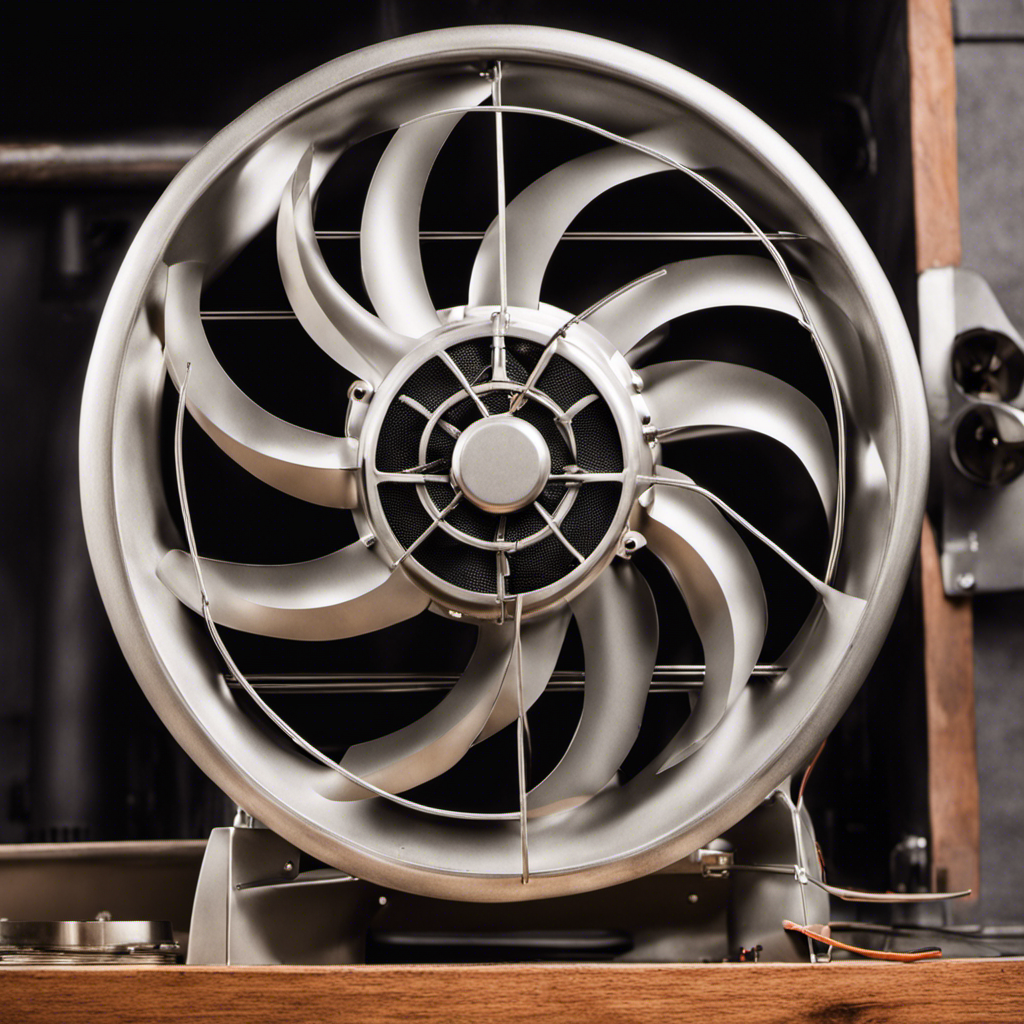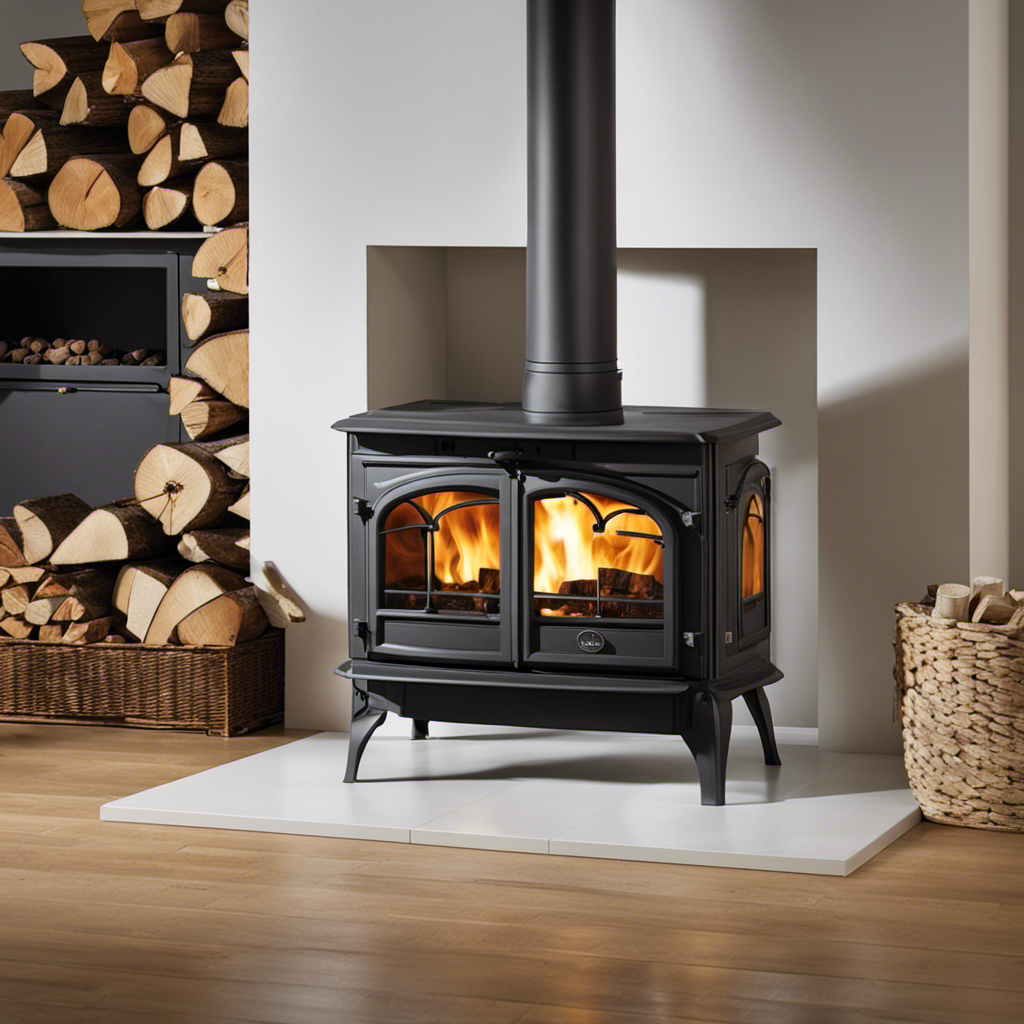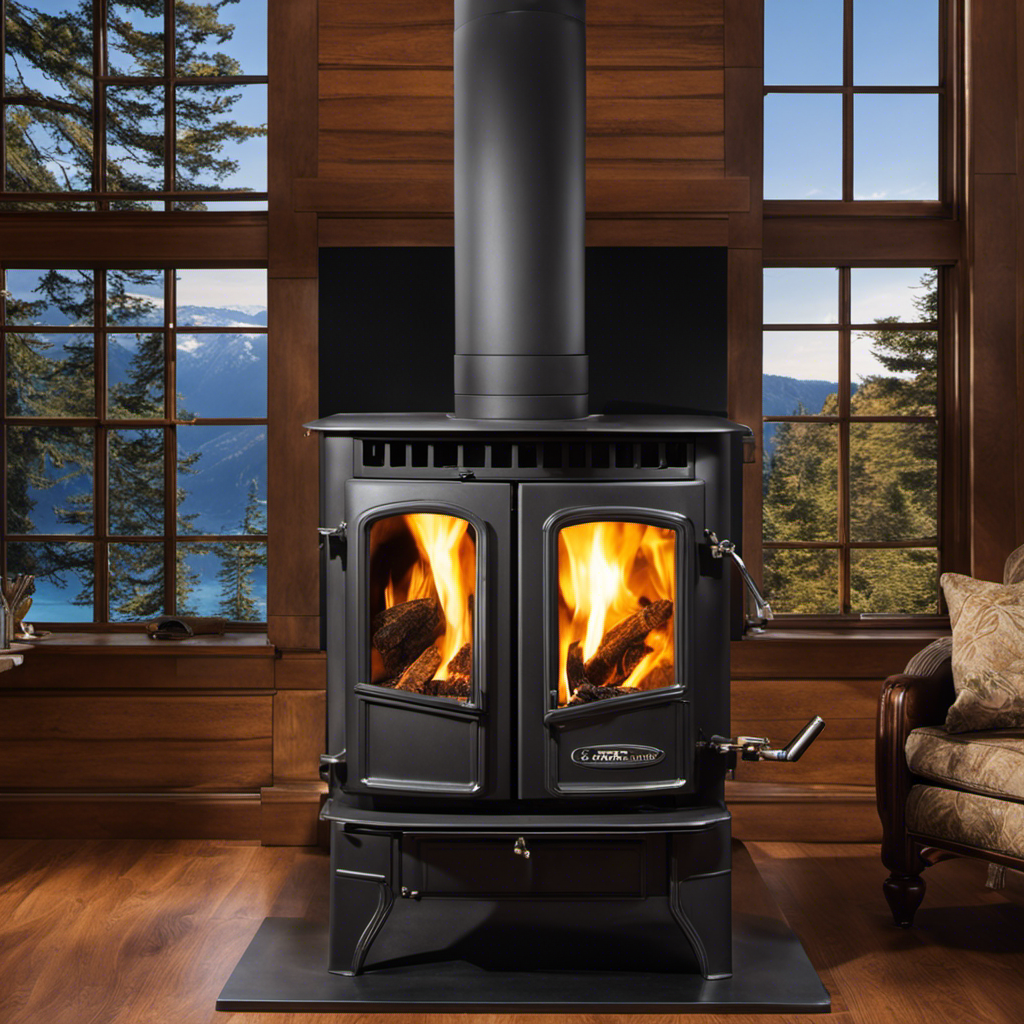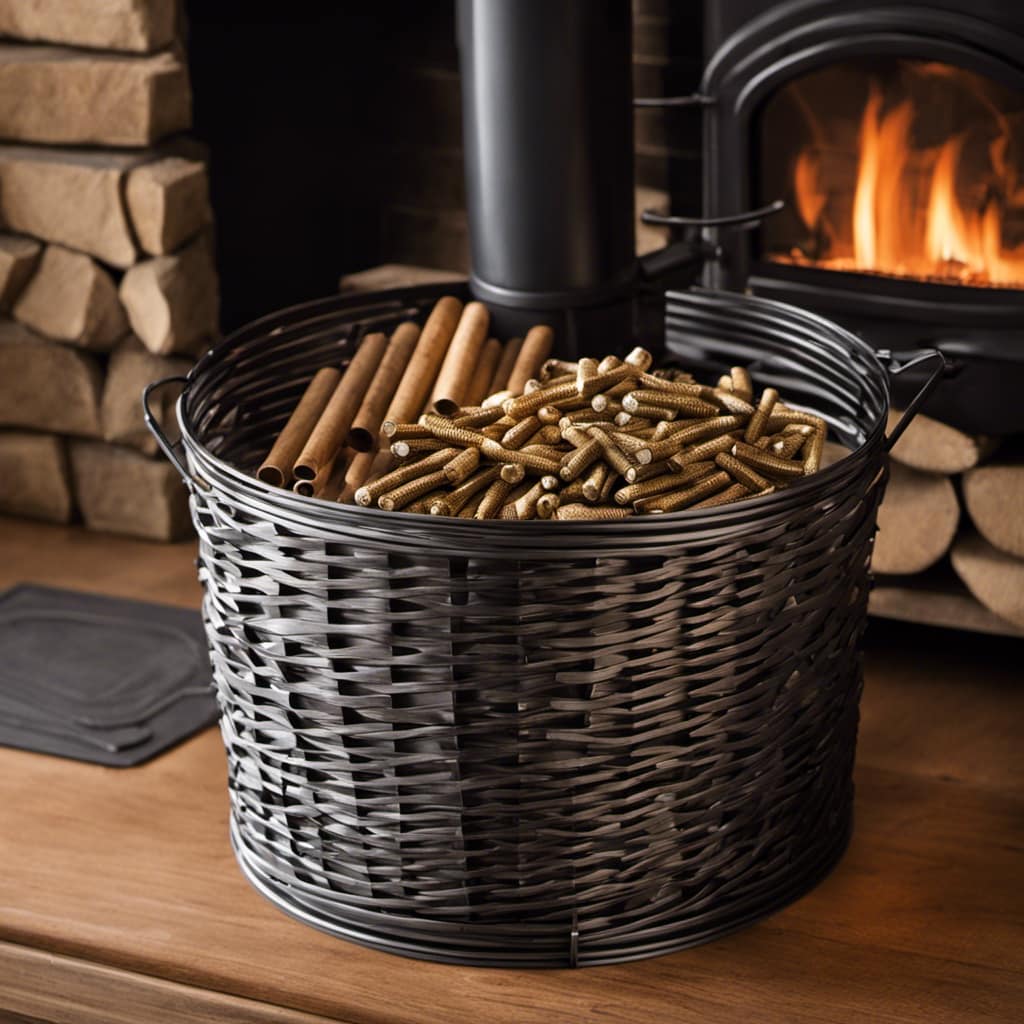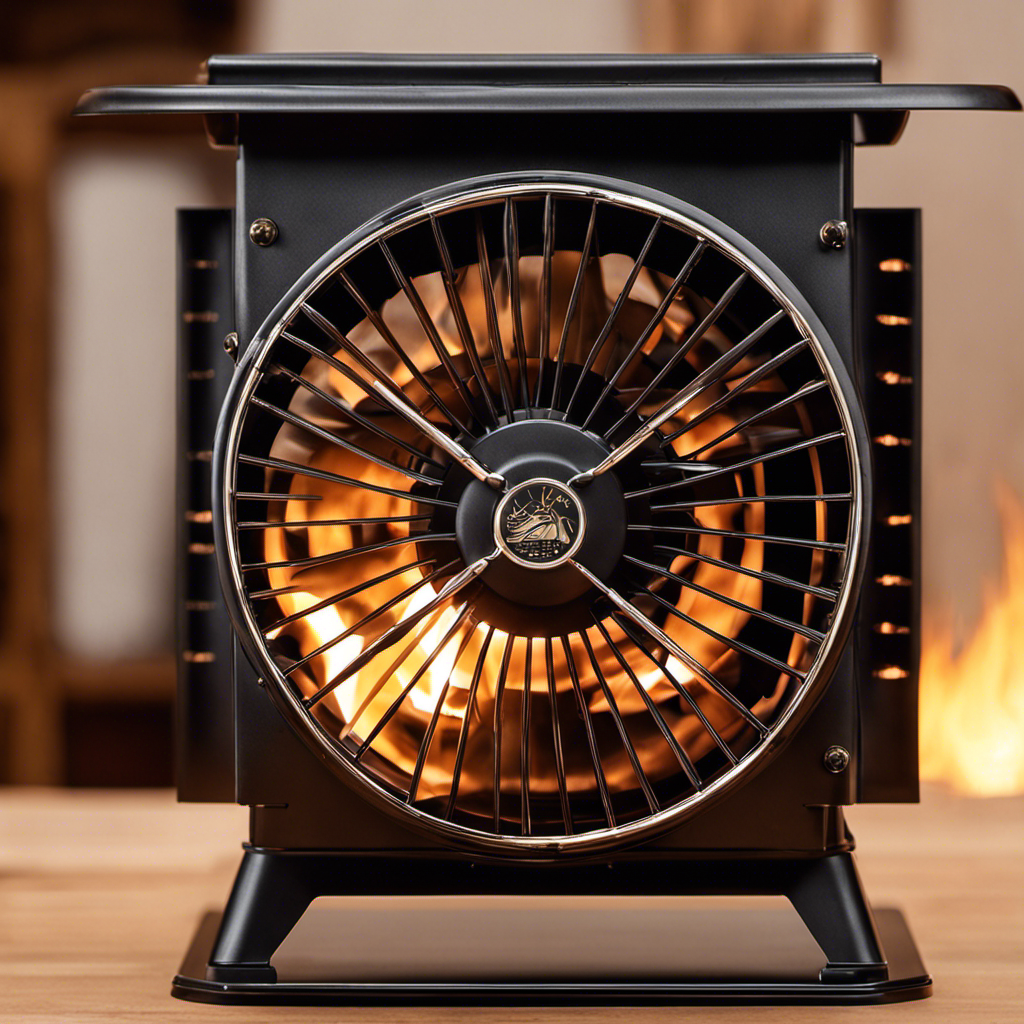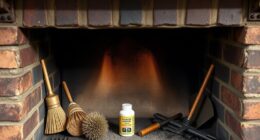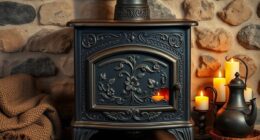Adding fans to a wood stove heating system is like giving a fireplace wings, significantly improving its efficiency.
In this guide, I will walk you through the steps of choosing the right fan, gathering the necessary tools, and preparing your wood stove for installation.
We will then delve into the process of properly wiring and adjusting the fan, ensuring optimal heat distribution throughout your space.
Get ready to elevate your wood stove’s performance and maximize warmth.
Key Takeaways
- Placing the fan at the back of the wood stove, near the top, helps create a balanced and comfortable environment by pushing hot air forward.
- Regular maintenance, such as cleaning the fan blades and lubricating the motor, is crucial for optimal performance and efficient heat circulation.
- Gathering the necessary tools and materials, such as a screwdriver, screws, and a level, is essential for a successful fan installation.
- Testing and adjusting the fan’s speed settings, airflow direction, and temperature distribution in the room ensures optimal heat distribution.
Choosing the Right Fan for Your Wood Stove
I always make sure to choose the right fan for my wood stove to optimize heat circulation.
Fan placement plays a crucial role in achieving efficient heat distribution throughout the room. I recommend placing the fan at the back of the wood stove, near the top, to ensure it draws the hot air and pushes it forward. This placement helps to push the hot air towards colder areas, creating a more balanced and comfortable environment.
Additionally, regular maintenance is essential to keep the fan operating at its best. It’s important to clean the fan blades regularly to remove any dust or debris that may hinder its performance. Lubricating the fan motor and checking for any loose parts is also crucial for smooth operation.
Taking these maintenance tips into consideration will ensure that your wood stove fan continues to optimize heat circulation effectively.
Gathering the Necessary Tools and Materials
Before starting the installation process, it’s important to gather all the necessary tools and materials, such as a screwdriver, screws, and a level. These tools and equipment are essential for a successful fan installation for your wood stove.
Additionally, it’s crucial to prioritize safety precautions throughout the entire process. Make sure to wear protective gloves and eyewear to prevent any potential injuries. It’s also recommended to have a fire extinguisher nearby in case of emergencies.
Ensuring a stable and level surface for the fan is vital, as it will guarantee proper operation and prevent any damage to the wood stove.
Preparing Your Wood Stove for Fan Installation
After gathering all the necessary tools and materials, it’s time to prepare my wood stove for fan installation. Here are the steps I take to ensure proper wood stove maintenance and maximize the benefits of using a fan for wood stove heat:
-
Clean the stove: I start by cleaning the stove thoroughly, removing any ash, debris, or creosote buildup. This ensures better airflow and prevents any potential issues during fan installation.
-
Check the flue: Next, I inspect the flue to ensure it’s clear and functioning properly. Any blockages or obstructions can hinder the performance of the fan and affect the overall efficiency of the wood stove.
-
Position the fan: Before installing the fan, I carefully choose the best location on top of the wood stove. This ensures that the fan can effectively distribute the warm air throughout the room.
With the wood stove properly prepared, I’m now ready to move on to installing the fan and wiring it properly.
Installing the Fan and Wiring It Properly
To ensure the fan is installed correctly and wired properly, I carefully position it on top of the wood stove and connect the wiring using both screws and electrical tape.
When it comes to wiring techniques for fan installation, there are a few key points to consider. First, it’s crucial to identify the power source and make sure it’s turned off before starting the installation process. This will prevent any electrical accidents or damage.
Next, it’s essential to follow the manufacturer’s instructions and guidelines for wiring the fan. This includes connecting the wires securely and using the appropriate connectors.
Troubleshooting common fan installation issues may involve checking the wiring connections for any loose or damaged wires, ensuring proper grounding, and testing the fan’s functionality.
Testing and Adjusting the Fan for Optimal Heat Distribution
I adjust the fan’s speed settings to ensure optimal heat distribution throughout the room. Testing fan speed is an essential step in troubleshooting common fan issues.
When testing the fan speed, there are a few key factors to consider:
-
Airflow: I observe the direction and strength of the airflow produced by the fan. Is it reaching all corners of the room? Is it evenly distributing the heat?
-
Noise level: I listen for any unusual noises coming from the fan. Excessive noise could indicate a problem with the motor or the blades.
-
Temperature: I measure the temperature in different areas of the room to ensure that the fan is effectively distributing the heat. If there are any cold spots, I may need to adjust the fan’s position or speed settings.
Frequently Asked Questions
How Do I Determine the Appropriate Size of Fan for My Wood Stove?
To determine the proper size of fan for a wood stove, you need to consider factors such as the size of the stove, the heat output, and the size of the room.
Can I Use a Regular Household Fan for My Wood Stove?
Yes, you can use a regular household fan for your wood stove, but there are different types with varying benefits and drawbacks. It’s important to consider factors like air circulation and heat resistance when choosing the right fan.
Are There Any Safety Precautions I Should Take When Installing a Fan for My Wood Stove?
To ensure proper air circulation when installing a fan for a wood stove, it is crucial to have proper ventilation in the room. Additionally, fire safety measures such as keeping flammable objects away from the fan should be taken to prevent the risk of fire.
How Often Should I Clean and Maintain the Fan to Ensure Optimal Performance?
I clean and maintain the fan for optimal performance by following a regular maintenance schedule. I clean the blades and motor using a soft brush and vacuum, and lubricate any moving parts as needed.
Can I Install Multiple Fans for Better Heat Distribution?
Yes, you can install multiple fans for better heat distribution. In addition to installing additional fans, there are alternative methods such as using a heat-powered fan or strategically placing fans to improve circulation.
Conclusion
In conclusion, with the right fan and proper installation, you can greatly enhance the heat distribution of your wood stove.
By choosing the right fan for your specific needs and following the proper steps, you can ensure optimal heat circulation throughout your space.
With a little time and effort, you can enjoy the cozy warmth of your wood stove throughout your entire room.
So why wait? Get started on installing your wood stove fan today and maximize the comfort of your home.
Growing up surrounded by the vast beauty of nature, Sierra was always drawn to the call of the wild. While others sought the comfort of the familiar, she ventured out, embracing the unpredictable and finding stories in the heartbeat of nature.
At the epicenter of every remarkable venture lies a dynamic team—a fusion of diverse talents, visions, and passions. The essence of Best Small Wood Stoves is crafted and refined by such a trio: Sierra, Logan, and Terra. Their collective expertise has transformed the platform into a leading authority on small wood stoves, radiating warmth and knowledge in equal measure.

